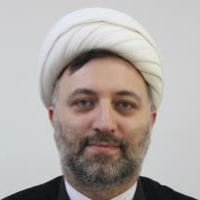A Critical Study of Western Excuses Using Newly Discovered Versions of the Quran
Considering the dating of old versions of the Quran by Western scholars through a new experiment of Carbon-14 radiography, doubts have been raised by some Orientalists, especially revisionists, who have used the method of source critique to re-examine the original and authenticity of the Quran. . The implications of this suspicion are that the results of the Carbon-14 experiments date the ancient versions of the Quran, especially the Birmingham Library version, to before the time of the Holy Prophet (PBUH), which is evidence of its pre-Islamic compilation and consequently its lack of authenticity of Quran. This means that the content of the existing Quran was created before the time of the Prophet (PBUH) or otherwise the Muslims have made it using that Quran. The present article, considering the importance of the two manuscripts of Birmingham and Tübingen and the new experiments performed on them, based on the centrality of their study, analytical method and library research data on the mentioned doubt in three domains of manuscript-studies and technical, Quranic studies and current trends studies, seeks to respond to those doubts. The technical and manuscript achievements of the present research show that the experiments performed on the manuscripts, the pages of the Quran found, only show that they were made from the skin of an animal that was alive during the life of the Prophet (PBUH) or shortly thereafter and is unable to prove the prehistoric nature of their writings compared to the time of the revelation of the Quran; Some Western researchers have also considered the Carbon-14 test method to be relative and incomplete, which must be supplemented by other methods and is not self-evident; As the researchers in the project of testing Carbon-14 on the Quran, did not pay attention to the study of Arabic calligraphy as well as the sheet and its dimensions and the shape and type of font and illumination of the mentioned Quran, which indicates compliance with the date of revelation of the Quran. Also, the study of the Quran, such as considering the use of words in the Quran, as well as the Musahif in question, which did not exist or were not common in pre-Islamic writings, also pay attention to the gradual revelation of the Quran and the causes and dignity of the revelation of the Quran proves the compatibility of the aforesaid versions with the existing Quran. Also, the validity of the existing Quran is based on the issue of the verbal massive report of the Quran, which has existed for generations since the time of the Prophet (PBUH) step by step and is considered as a necessary belief among Muslims. As a result, existing versions of the Quran indicate the same verbal massive report among Muslims. Therefore, Muslims do not need to believe in proving or refuting the ancient Quranic Masahif, and if there are any errors in the manuscripts, the authenticity of the Quran and its textual validity, which is derived from verbal massive report, will not be distorted in any way. The result of the trend studies of the Carbon-14 experiment on the above-mentioned versions shows the attempt of the Oriental modernist current to critique the authenticity of the religious sources of Islam, which also has many opponents among Orientalists. Finally, the carbon-14 test did not reveal a significant difference from the Quran in the Mushaf in the hands of the Muslims.
-
Explanation of the Role of Cognitive Components in the Formation of the Islamic Revolution as a Social Phenomenon from the Perspective of the Holy Qur'an
*
Journal of Quran and social science,



